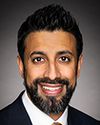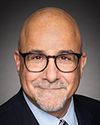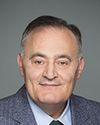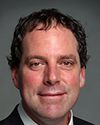Good day, Mr. Chair, vice-chairs and members of the TRAN committee.
I would like to thank the committee for undertaking this important review of Transport Canada’s aircraft certification process and extend my sincere condolences to those who have lost loved ones in the tragic events that have led to this study.
Let me introduce myself. My name is Jodi Diamant—Joanne to some. I am a professional engineer with a specialty in aircraft certification. I spent 18 years at Transport Canada Civil Aviation, and for the past 14 years I've been the chief engineer for airworthiness and certification at Pratt & Whitney Canada. I’ve been extensively involved in the development and application of design standards, the aircraft certification, validation and delegation processes, and implementation of safety management systems. I am here today in an individual capacity, because I've been involved in this process for over 30 years and I'm well qualified to explain how it works and how it can be improved.
As Mr. Quick indicated here, Canadian industry is a world leader in design and production of aircraft, helicopters and gas turbine engine products, and Transport Canada is recognized as having one of the most robust type certification processes in the world, resulting in an exceptional level of product safety.
As state of design under ICAO, Transport Canada is now responsible for the type certification and continued airworthiness of over 18,000 aircraft and helicopters today and over 60,000 Pratt & Whitney Canada engines currently flying in the world, including in Canada.
The type certification of aircraft and engines—which is exceptionally complex, as the Transport Canada representatives explained in February—is just the starting point of aviation safety, before the products enter service. It's very critical, though. It's a partnership in which there are very defined roles, obligations and accountabilities of the parties involved in the certification process. I'm going to go through it very quickly.
There are the regulators: ICAO, which you heard about from Ms. Fox; Transport Canada; and FAA. There's the applicant, which is us in the industry represented here, and delegates.
I have to stress that however it's been characterized, the system is not self-certification and it's not regulation at all. Very simply, starting at the top, ICAO—which Ms. Fox talked about—is an international body. It's a special agency of the UN that has been in place since 1944. Canada is a main signatory, and obviously ICAO is headquartered here. It defines the high-level responsibilities, requirements and processes that are used by countries, regulators and the industry to design and certify a safe product. It drives bilaterals and harmonization. Note that this approach is unique to the aviation sector. There is no other industry that has the same model of international regulation governance and oversight.
Transport Canada, based on the ICAO requirements, defines the design standards and processes to establish the product level of safety and the acceptable methods to demonstrate compliance with these requirements, and how to prove it.
Industry, the companies that design the products—we're called “the applicant”—have to design them using many suppliers and our own expertise. We have to design them to meet those design standards. That can take years. Then we have to prove to ourselves but, more importantly, to Transport Canada that a product complies with or meets all of those design standards that are set by Transport Canada and that the product is safe.
For an aircraft, there are over 1,200 requirements. For an engine, there are at least 100. We have to prove that each and every one of those meets those requirements.
Transport Canada will only approve that aircraft or engine once the company—the industry—has proven that each and every one of those requirements has been demonstrated. They have to have confidence in that.
At the beginning of the certification process, and throughout, there is constant communication between Transport Canada and the applicant. It's not just at the beginning and then we'll see you at the end. It's all the way through.
Transport Canada uses a risk-based approach to determine its involvement during the compliance demonstration phase of the process. They focus on safety-critical aspects, new and novel processes, and design and compliance methodologies. They witness tests. They read reports. They're in there constantly.
Post-certification, the type certificate holder—because we now hold the design approval—has the obligation to monitor the products in the field, identify and analyze issues that could lead to unsafe conditions, work with Transport Canada to introduce required corrective actions and apply lessons learned for design and certification of new products. It's a continuous improvement cycle.
The Transport Canada aircraft certification process is fundamentally robust. It results in an exceptional level of product safety. However, as we know, in the current environment of increasing product complexity and integration, evolving technologies and commercial pressures, the process can be further improved. My recommendations on industry require organizations involved in product type certification and production to have safety management systems.
Let me explain safety management systems, or SMS. Canada was a world leader and recognized in rolling out SMS in the early 2000s on our large CAR 705 operators. It has taken a bit of a hiatus. Many of the committee members may appreciate the journey it has been on.
For certification, let me say that SMS does not replace the certification process or requirements at all. They exist as they have been and will be. It complements and reinforces that by requiring an organization's management system to identify and manage product safety risks associated with the business processes and decisions. It requires executive accountability for product safety and the development of an organizational safety culture.
ICAO has recognized the importance of SMS, not just for operations, but also for our sector of industry, and has introduced the requirement into ICAO annex 19. Transport Canada should put the processes and resources in place to evaluate and recognize those organizations that would like to have SMS or should have SMS on a voluntary basis in advance of or in place of rule-making.
They need to mandate SMS. For Transport Canada, to echo Mr. Quick's comments, it is very important for the Canadian public as well as the industries sitting here at the table. They have to maintain their certification competency through the retention and development of sufficient qualified experts involved in key steps of the certification and continued airworthiness process.
That includes everything from standards development, bilaterals, involvement in the actual product certification processes and oversight of company processes for certification, as well as SMS. In addition, Transport needs to ensure that the appropriate organizational structure is aligned with main bilateral partners.
With the above suggestions, the current robust Transport Canada certification process and product safety record will be further enhanced.
I would like to thank you for your attention. I'd be pleased to respond to questions at the appropriate time on certification, delegation, validation and SMS.
Thank you.












